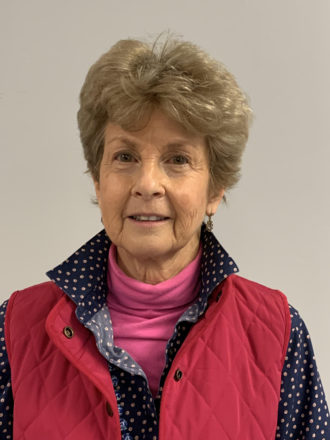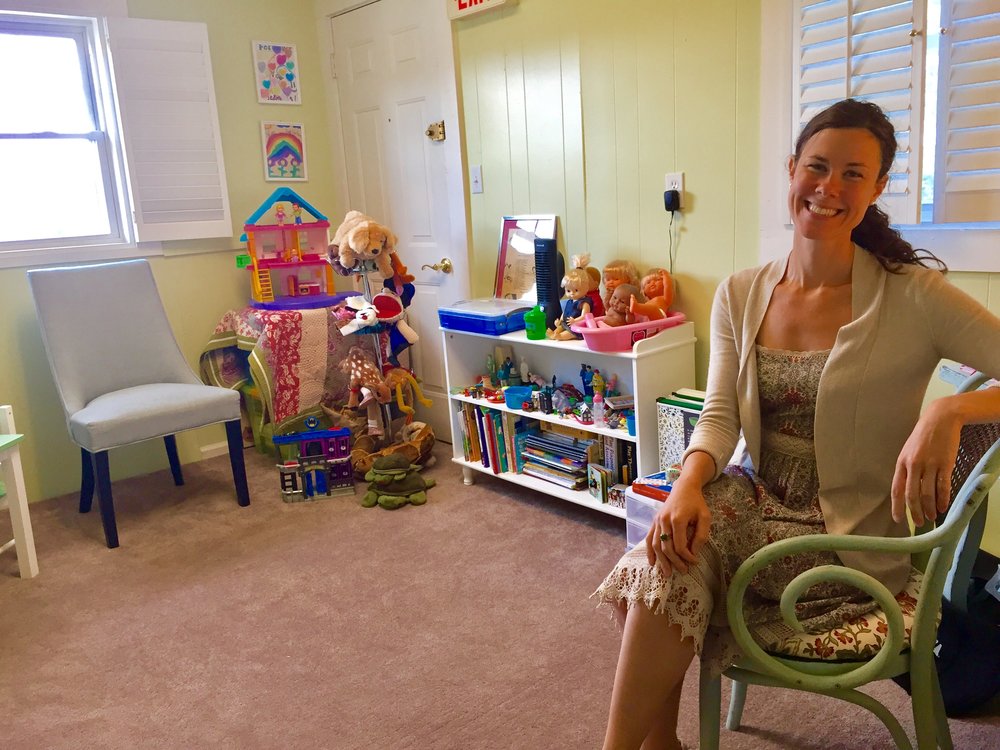When Katie Ford decided to cancel her 3-year-old’s small birthday party due to a COVID-19 exposure, she and her son, Tasman, talked about other ways they could celebrate, like bringing food and a card to his sick friend.
“While all these cancellations and changes certainly have the potential to increase anxiety and fear, they are also providing lots of opportunities to talk about ways in which we can support other people,” says Ford. “In an effort to try and find a silver lining, perhaps these conversations also have the opportunity to provide an increase in compassion and interest in supporting others.”
Like many Western North Carolina parents of little ones, Ford is concerned about her son’s social development during the pandemic, as well as messages about safety and fear of people. Ford, a family therapist and owner of Asheville-based Katie Ford Counseling & Consulting, says it’s too early to tell if the societal shifts spurred by COVID-19 will have long-term effects on children born into this world. But she stresses that it’s more important than ever to validate kids’ feelings and let them know they’re not alone.
Just normal
Kids younger than three usually don’t have trouble wearing masks. In many cases, that’s all they’ve ever known. Jillian Kelly, founder of Asheville Child Therapy and a psychotherapist for children ages 3-10 and their families, is also the mom of a 1 1/2-year-old.
“He was born six months into the pandemic; now he feels like one of the bunch wearing a mask,” Kelly says of her son. “I tell him that we’re wearing our masks to protect ourselves, just like we put on our coats to protect our bodies from the cold and wear shoes to protect our feet.”
Dr. Rebecca Baum, a pediatrician with the Mission Health system, reports that while kids miss many facial expressions due to masking, they still get cues from the unmasked portion of faces and the important messages conveyed through tone and word usage. “Some toddlers may not have had as many opportunities to interact with other children due to social distancing. While they may have had fewer opportunities to learn some of the social ‘rules,’ we wouldn’t expect significant delays in their development,” she says.
Kelly emphasizes that it’s important for parents and caregivers to focus on circumstances within their circle of control, such as making a big deal about hand-washing, and not be preoccupied with what other people are doing. “This is no time to be a perfectionist,” she says.
Day by day
Ford, the family therapist, works with children ages 6-8 who aren’t used to wearing masks, staying away from their friends and missing time with extended family members. They exhibit anxiety and fear in new situations; to them, masks represent sickness and death.
Those are the kids who may need a little extra help at this time, Ford says. But mental health staffing shortages and a huge demand on therapists’ time have made getting an appointment difficult, if not impossible.
The same goes for day care. Marie Eller, an Asheville grandmother with full custody of two young children ages 3 and 1 1/2, knows that kids are resilient. She strives to maintain a sense of normalcy in her home and does her best to keep it stress-free. And while she agrees that children are missing out by not getting sufficient social interactions, she’s run into more immediate concerns for kids and their families as the pandemic stretches on.
“I’m really lucky that I at least found part-time day care,” says Eller, who works at A-B Tech. “But the kids get really upset when it has to close if someone comes up positive for COVID or just doesn’t show up to work, which happens all the time now.” She hears from other parents and caregivers that finding day care today is their biggest challenge, with many running into long wait lists.
Eller says that raising kids during the pandemic is much more difficult compared to when her own children were young a decade ago. “Today, if one of the kids gets the sniffles, I have to keep them home and get them tested and then wait three days for the results.” But she appreciates that she can do her job online and that her employer allows her to work from home during the inevitable bouts of common toddler illnesses.
Through it all, Eller remains adamant that she’s not going to add pressure to her already stressful life. “I’m not going to freak out about how these kids are going to be affected by the pandemic,” Eller says. “We try to keep it easygoing and laid-back at home. I just accept what I have to do each day, do my best and let go of the things I can’t control.
A parent’s role

The world may be in chaos, but it’s on parents to provide a sense of stability and sanity in the home, says Barbara A. Simone, a children’s book author, life coach and teacher who now lives in Hendersonville.
“Parents are the primary educators,” Simone says. “A toddler’s mind is a sponge, absorbing the feelings and attitudes of the parents. Fear, anger, resentment, political polarity — it goes right into the child’s mind. And 0 to 3 is the most important time to develop a child’s mind.”
Simone says the most important thing parents can do is take care of themselves, both physically and emotionally. “The more health they bring into the home, the better. Leave everything at the front door when you get home, and it’s all normal again,” she says.
If it’s not a big deal to wear a mask and miss big birthday parties for the parents, then it’s not a big deal for the little ones, Simone continues; after all, they wear masks at Halloween. “Kids are innocent. We are the ones who put meaning into everything.”
Simone, who facilitated parenting classes for nearly a decade, says that parents need to work through their emotions and ease up on themselves. “Parents need to go to bed thinking, ‘I did the best I could today.’ And then let the rest go,” she says.
“The most important interactions toddlers have are with their parents or caregivers,” agrees Baum. “Thankfully, families typically have unmasked time at home.”
She adds that if parents are concerned about their child’s development, they should talk to their pediatrician about it. “Sometimes, all they need is reassurance,” Baum says.
Age-appropriate language
It’s not easy talking to young kids about serious issues and medical terminology. Explaining a pandemic and its associated consequences can be daunting for many caregivers and teachers.
In her family practice, Ford says she regularly hears parents “grappling with how to explain these changes to toddlers in a way that is both honest and developmentally appropriate.” And she hears that medical themes have become more prevalent in toddlers’ play.
“It’s common for young kids to work through things through play, as play is their language,” Ford says. “Play also can be a great learning and healing tool for our toddlers, in which we can try to help them understand what is happening in their lives through their own language of play.”
Kelly uses props and puppets when she works with young kids and says that the pandemic provides opportunities to talk to them about hard topics like safety and loss. “All the kids in your family need to be included in conversations about loss, death and grief,” she says, and encourages parents to use videos like those presented on SesameStreet.org.
She’s also authored a book on the subject, I Didn’t Get to Say Goodbye: A Story for Grieving Children During Coronavirus, with separate versions for kids 3-6 years old and children ages 6-12. Both are available through Amazon and Barnes & Noble, with all proceeds going toward local food banks.






I agree with the ideas expressed here that these young children absorb everything they are exposed to. Ideally, that main contribution should be coming from the parents. If the parents aren’t freaking out then the kids won’t freak out. If the parents think masks are signs of death and disease then so will the kids. If the parents are the type that assign education levels and political affiliations and general rube/serial killer status to each person they see without a mask, then the children will develop a crippling fear of “maskless people”.
What I don’t understand is why we should feel a need to make small children “understand a pandemic and its associated consequences”. As adults, we see lots of changes in the past 2 years but small children haven’t been around long enough to feel as effected by the changes as we do. Their lives are filled with more daily changes than we as adults can even imagine any more. Good health and care practices shouldn’t be taught to be a product of a pandemic, they should be normal things to do and teach. Dealing with loss and death and sickness is a part of life. It is not new. Why do children need to be taught any differently about these things “during a pandemic” than they would at any other time in history? Hasn’t it always been good practice to keep a sick child at home instead of sending them to day care or school to infect others, regardless of what the diagnosis may be?
It seems to me that the biggest societal shifts we have seen over the past couple of decades have more to do with parents who don’t want to parent their children but rather “coach” them into being little clones of themselves and being “good voters”. This barrage of unlimited access to social media and adults pushing complex, negative, doomsday ideas into kids’ heads from the time they are in primary school until they graduate from high school and then college has created a generation of folks that has nothing to look forward to by the time they reach adulthood.
Maybe we should just try to teach our children the things they really need to know, and give them the support they need when they need it, and allow them to be children. They will learn the burdens of being adults soon enough. Life is full of problems and situations. We would do better to learn from the kids how to take things more in stride and work through problems rather than teaching them how to turn everything into a panicky crisis.